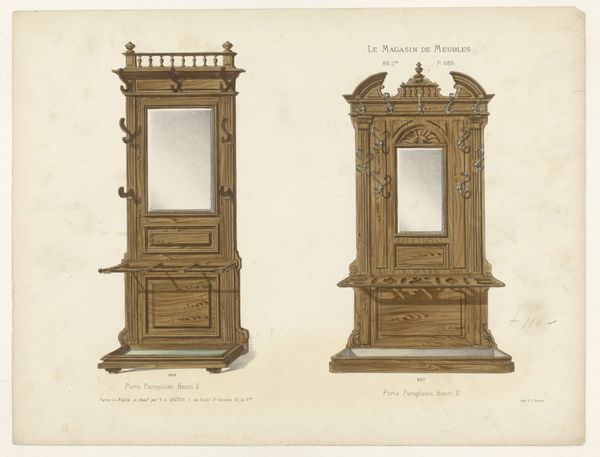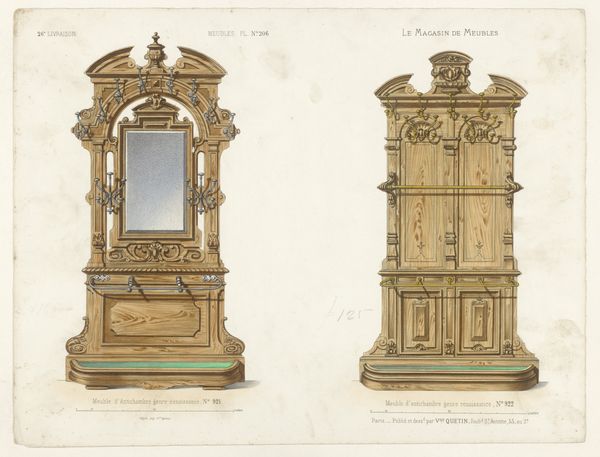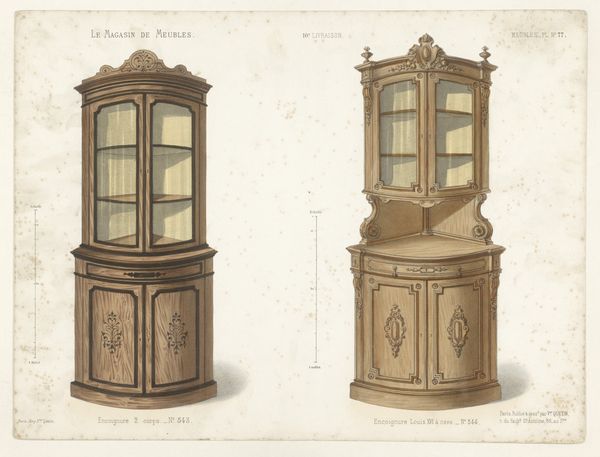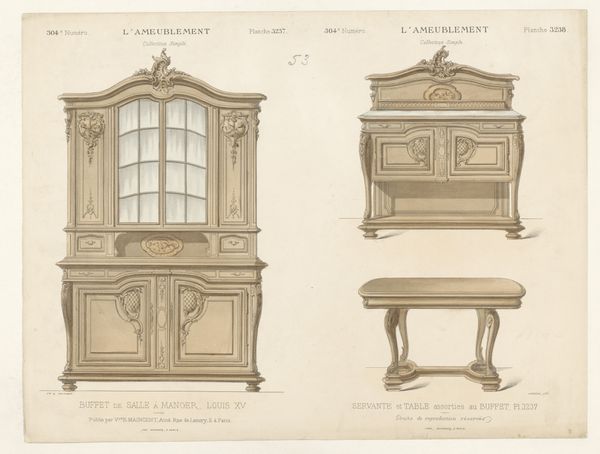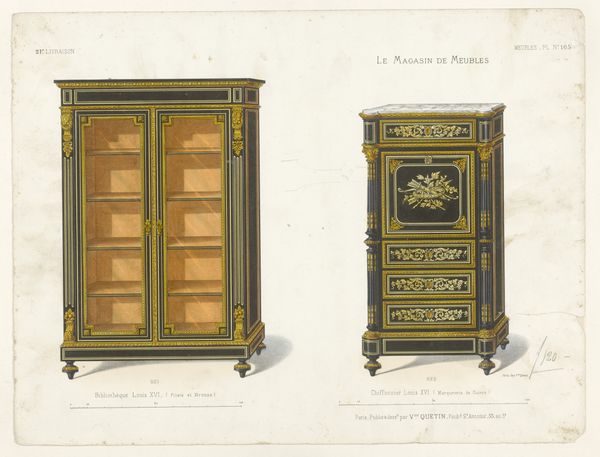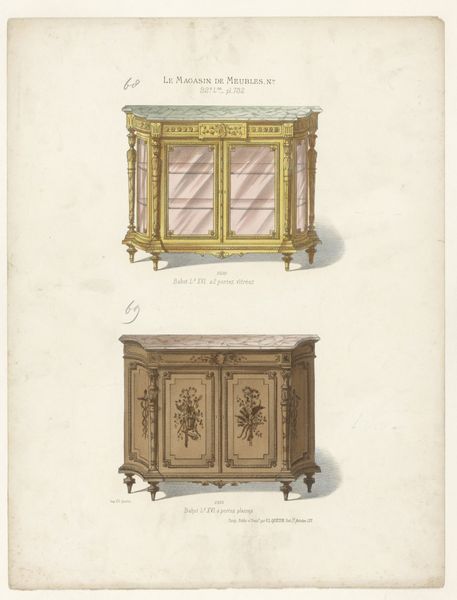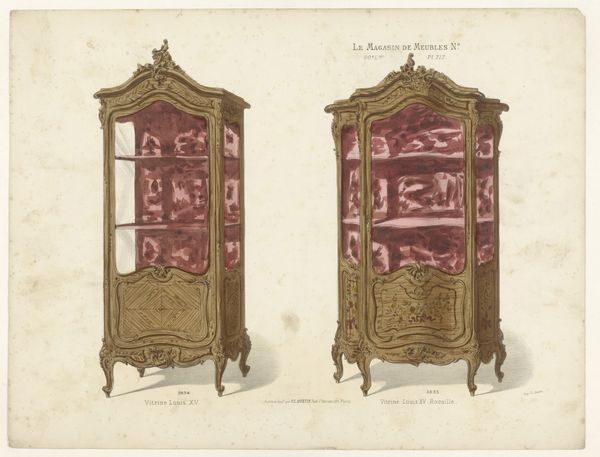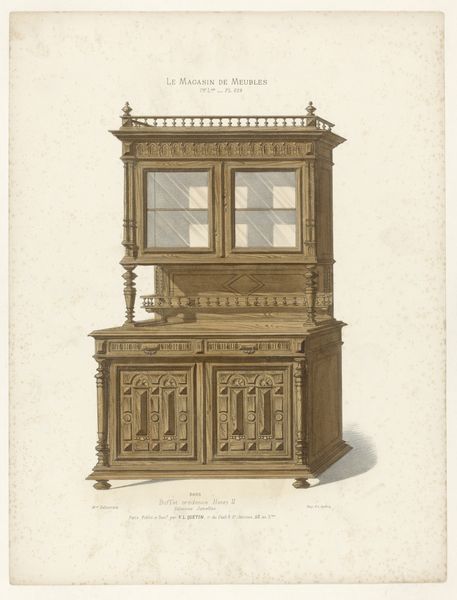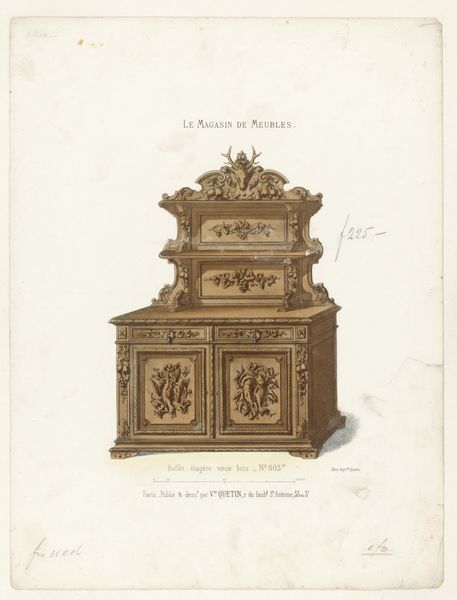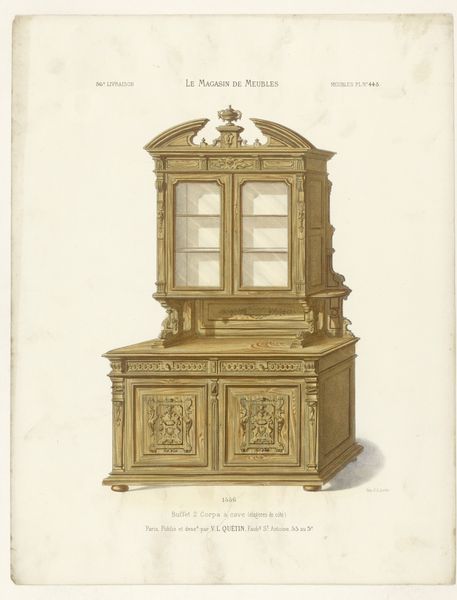
drawing, print, woodcut
#
drawing
#
neoclacissism
# print
#
furniture
#
woodcut
#
19th century
#
history-painting
Dimensions: height 273 mm, width 357 mm
Copyright: Rijks Museum: Open Domain
Curator: Here we have a print called "Twee buffetkasten," dating from sometime between 1832 and 1877, by an anonymous artist. It’s a woodcut, depicting two different styles of buffets, or sideboards, likely intended for a furniture catalogue. Editor: The intricacy of the carving detailed in a woodcut print really gives it the flavor of the early 19th century. What strikes me is the contrast between the angular, almost severe form of the furniture, against the fluid, almost wild decoration of organic forms, acanthus leaves, crests, perhaps even mythological animals I can make out. Curator: Absolutely, you're observing a fascinating interplay of cultural symbols. Neoclassicism at this time drew upon not only the forms of classical antiquity, but also incorporated iconographic references. The carved elements – shields, foliate patterns – speak to power, abundance, and enduring style. The shield can be linked back to aristocratic families and their lineage. Editor: And see how the artist uses line to suggest the play of light across the carved surfaces? It lends the otherwise static objects a dynamic, almost breathing quality. It’s particularly noticeable on the piece on the right. It creates so much contrast with its surroundings. Curator: Exactly, there’s a tension created there with its formal elements. The careful arrangements within upper-class homes were signifiers. What objects might have been carefully curated within such a display cabinet, speaking volumes about the owner's status and taste? This piece is really a symbolic tableau, suggesting values prized in that time period. Editor: I agree, and these sideboards tell more of a story about that period than you would think they would. The overall visual is much greater than the sum of its parts. Each design element adds something. I will probably never look at furniture the same way again. Curator: Nor I. And next time I need furniture, I will remember that furniture can have stories that it tells you about other eras and ideas.
Comments
No comments
Be the first to comment and join the conversation on the ultimate creative platform.
